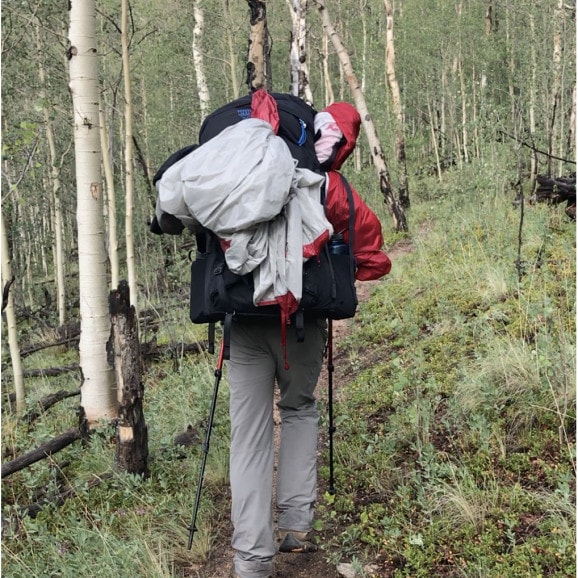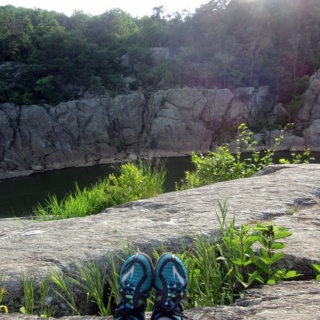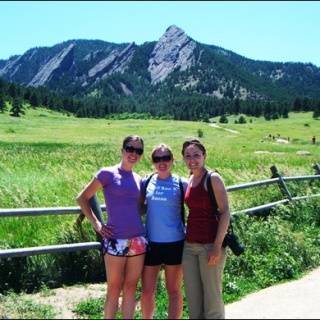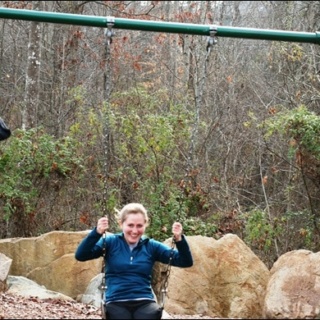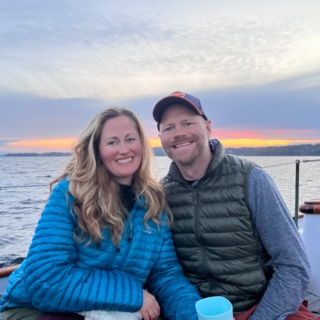Hi All! It’s Anne’s brother Steve, returning for part 2 of 3 in my series of posts about my experience thru-hiking the Colorado Trail this summer. In my last post (check that out first in case you missed it: Through Hiking the Colorado Trail, Part 1), I talked about the logistics of thru-hiking and the preparation I underwent before starting. With this post, I’ll highlight some of my favorite experiences from the first half of my time on the trail.
Want to save this post?
Enter your email below and get it sent straight to your inbox. Plus, I'll send you great content every week!
First, I think it’s somewhat helpful to clarify what a day on the trail was like. I’d usually get up around 5:30 to 6:00 in the morning, as the sun starts coming up very early during the summer in Colorado. From there, I’d boil water for coffee and breakfast on my Jetboil, and start breaking down camp and preparing for the day. This involved tearing down the tent, repacking all my clothes and sleep gear, and getting my lunch for the day out of my food sack so it would be easily accessible. By the time this was done, I’d usually have my food ready, eat it, and then be on the road by 7:00 to 7:30.
As I mentioned in the first post, rain was my constant companion while on the Colorado Trail. So, more often than not, my pack would look like what you see above as I started walking for the day. Rain, condensation, or setting in the tent on wet ground would usually mean that my tent was still fairly damp by the time I was ready to start moving – so I’d strap it to the outside, and wait for the sun to come out in the early afternoon to dry it. Luckily, the tent did a good job keeping everything else dry, so I never had any of my other equipment soaked and requiring drying!
I would generally stop a few times in the morning to refuel with food and drink some water, with the goal of trying to get around 10 miles in before noon or so on a typical day. Around the same time as I stopped for a longer lunch break, I’d usually take the opportunity to refill my water using my gravity filter. This made planning my mileage for the day even more important – I had to know where I could get water so I didn’t end up missing an opportunity and going dry during the day’s hiking!
Depending on the mileage for the day, I’d get in to camp at any time between 3:00pm and 6:00pm – with the exception of one very long day where I got in at 10:00pm after walking 33 miles. Once I got in to camp, my first priority was always to set up my tent. You never knew when rain could roll in, so it was important to have the tent up as fast as possible so you had a dry place to store all your equipment. The next priority would be grabbing more water to filter and refilling my bottles. I’d usually take this opportunity to boil some more water for coffee, as well, as a nice end to the day. With these tasks done, I’d set up my sleeping bag in my tent, blow up my air mattress, and then read or chat with the people in the camp site, depending on if I was alone or not. I’d eat dinner around 6, and then head to bed around 8pm (as it got dark). And then I’d be up to do it again the next day!
As I continued along the trail, I followed this routine most days – occasionally weather would force me to hide under a tree to avoid getting soaked, or confine me to my tent in camp, but the general structure of most days was the same. Even with this routine, though, there were new things to see (and encounter) each day. One of the most exciting moments of the trip was arriving to the Continental Divide for the first time. It was about Day 6 on the trail for me when I arrived, and it was breathtaking to really get above the trees and into alpine terrain after walking through the foothills for the past week.
Another exciting encounter was a few days later. Surprisingly, my closest encounter with wildlife came just a few miles away from the highway that connects Breckenridge and Frisco.
Climbing steadily up from Highway 9 towards Miners Creek, I was walking through the thick forest when I came to a meadow area just ahead. Surprisingly enough, I saw two huge moose standing maybe 15-20 feet off the trail! I knew I didn’t want to attract their attention (and they are huge, for those who haven’t seen them in person), but I didn’t have much option for where to go. There was no good detour to take around the meadow, and waiting them out didn’t seem feasible. So, I just walked by, keeping my eyes straight ahead and hoping I wouldn’t hear them charging after me! Unfortunately, I didn’t get a great photo at the time given I was more concerned about surviving the encounter, but I did snap a shot after I was on the other side of the meadow.
After reaching the Continental Divide, one of the great parts of the Colorado Trail is the opportunity for side trips. There are dozens of 14ers (mountains with peaks over 14,000 feet) with easy access from the trail, most taking 4-7 hours to climb round trip. Given my love for mountaineering out West in Washington, I was excited for the opportunity to add some more 14ers to the list of mountains I had climbed. The first one that I attempted was Mt. Massive, the second highest in the state of Colorado and famous for its several false peaks that are encountered before reaching the top.
Unfortunately, the weather didn’t quite cooperate with my summit of the mountain. Rain drizzled on me steadily as I walked up (starting around 5 in the morning to attain the peak before the normal afternoon storms). I was fairly waterlogged as I began nearing the summit, at which point I entered the cloud you can see in the photo above. Unfortunately for me, inside the cloud I encountered hail and snow – not a great combination when you’re wet already above 14,000 feet! The clouds also prevented much of a view at the top, as the photo below shows. I summited around 7 in the morning and didn’t linger up top for long!
I hurried down and hopped in my sleeping bag to warm back up once I got back to my tent. Overall, the hike up Mt. Massive was about 7 miles round-trip and involved gaining about 3500’ of elevation to the peak. After spending some time warming up, I felt ready to start walking to my next camp site at the trailhead to Mt. Elbert, my goal for the next day. Fortunately, the weather was far more accommodating on this attempt, as you can see from the beautiful sunrise I encountered while walking up!
Mt. Elbert is the tallest mountain in the state of Colorado, albeit not the most distinctive from afar. Compared to the jagged false peaks on Mt. Massive, Mt. Elbert is much more gently sloped at the top. The walk was very similar to Mt. Massive – about 8 miles round trip from the trailhead and involving about 4,000’ of elevation gain. As with Mt. Massive, I started early at around 5 and gained the summit around 7am. In the case of Mt. Elbert, this had the additional benefit of allowing me to do the hard climbing in cool weather before the sun was up.
I was fortunate on Mt. Massive to meet a group of hikers coming from the northern trail as I reached the summit, who took a photo of me with the American flag you see in the photo. I was surprised to find the improvised flagpole on top of the mountain (and to see that it had survived the terrible weather of the previous day) but it made a great spot for a photo. I passed lots of hikers walking up as I headed down the mountain – sweating a lot more than I had as the sun beat down on them during their walk!
With the literal and figurative high point at the conquest of Mt. Elbert, I’ll finish today’s segment. I’ll return next week with the third and final segment, in which I talk about some of the towns along the trail, the beautiful San Juan mountains, and the final push into Durango, Colorado. I hope you’ve enjoyed the recap so far!
Read the final post in this series: Through Hiking the Colorado Trail, part 3.
If you enjoyed this post, check out Steve’s two previous guest blog posts (recapping some of his mountaineering adventures):


